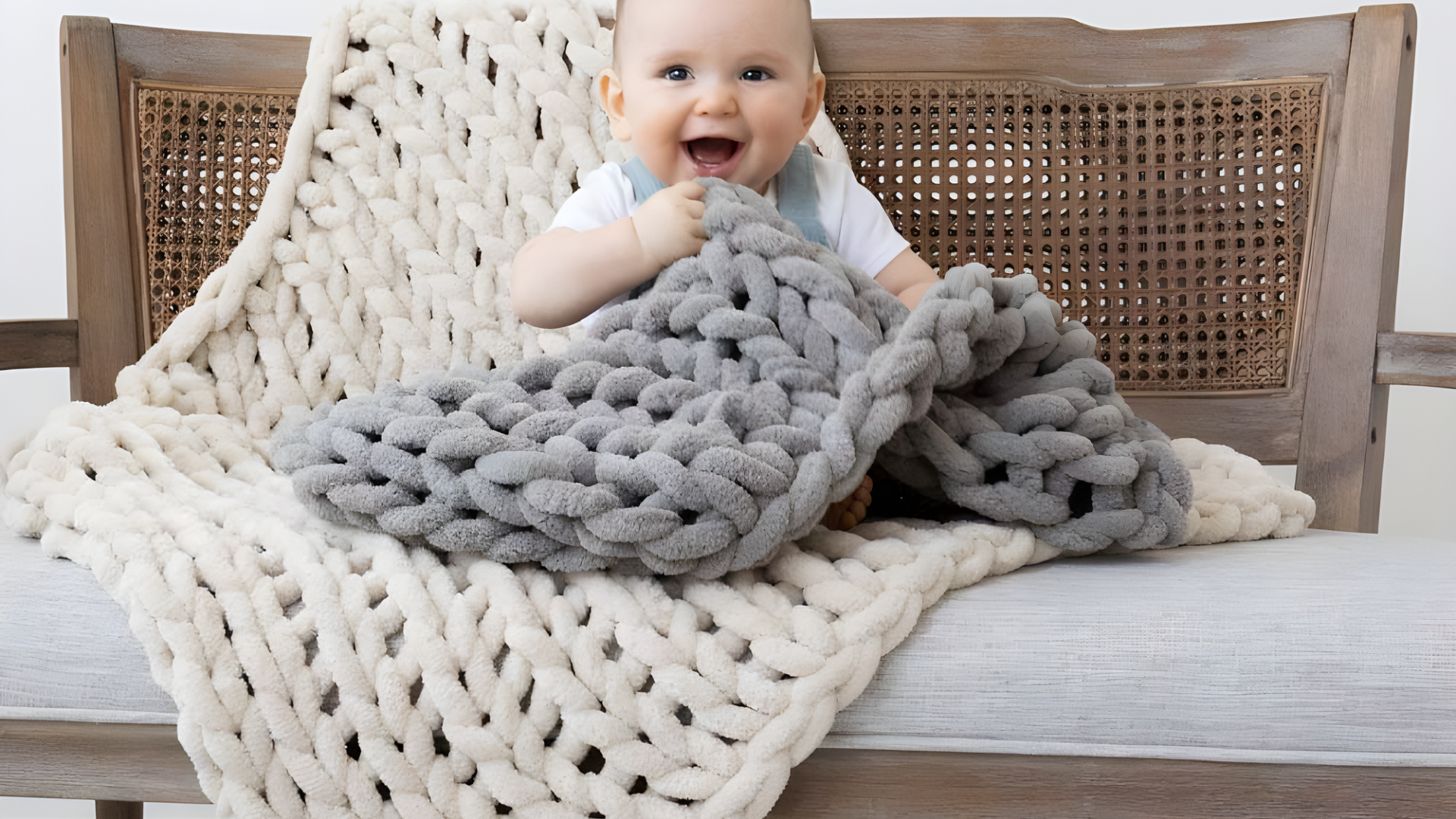When I first started crocheting, I realized how much the choice of yarn matters. Choosing the best yarn for a baby blanket determines how soft, durable, and safe the finished piece will feel.
Using the wrong yarn can make the blanket rough or lose shape after washing. The right one keeps it smooth, warm, and gentle on delicate baby skin.
In this guide, I’ll show you how to pick the ideal yarn for baby blanket projects and share easy steps to crochet your own. You’ll learn how to make the foundation, create the ripple stitch, add borders, and finish it beautifully.
You’ll also find my favorite picks for the best baby blanket yarn that’s cozy, washable, and made to last.
Why Yarn Choice Matters for Baby Blankets
Choosing the right yarn for a baby blanket is more important than it seems. Babies have sensitive skin, so the yarn should be soft, gentle, and free from harsh materials.
The right yarn also helps your blanket last longer and stay cozy through many washes. It keeps your baby warm without overheating.
A thoughtful yarn choice makes the blanket safe, comfortable, and perfect for cuddling your little one every day.
What to Look for
Before you start crocheting, it’s important to know what makes a yarn right for baby projects. Here are a few key things to check when choosing the best yarn for a baby blanket:
- Softness: Choose yarn that feels smooth and gentle to the touch. It should stay comfortable against a baby’s skin.
- Hypoallergenic fibers: Pick baby-safe yarns to prevent irritation or allergies.
- Safe dyes: Go for non-toxic, colorfast yarns so colors don’t fade or bleed.
- Washability: Use machine-washable yarns that stay soft and hold shape after washing.
- Durability: Pick anti-pilling or tightly spun yarns that resist fuzz and wear.
- Weight: Medium-weight yarns like DK or worsted are ideal for easy handling.
- Color: Soft shades like cream, mint, or pastels look calming and suit baby items.
- Texture: Choose smooth yarns that don’t shed or snag while crocheting.
- Climate suitability: Use cotton or bamboo for summer, acrylic or blends for warmth.
Best Baby Blanket Yarns for Baby Blankets
Choosing the right yarn affects how soft, durable, and easy your baby blanket will be. Each type has its own benefits, so pick one that fits your needs and skill level.
1. Cotton Yarn
Cotton yarn is soft, natural, and perfect for sensitive skin. It keeps babies cool in warm weather and feels cozy all year round.
It’s durable, easy to wash, and holds its shape well after many uses. Slightly heavier than synthetics, it’s great for sturdy, long-lasting blankets.
Brands to try: Lion Brand 24/7 Cotton, Paintbox Cotton DK, Hobby Lobby I Love This Cotton.
2. Acrylic Yarn
Acrylic yarn is lightweight, durable, and ideal for everyday use. It’s soft, machine-washable, and perfect for those new to crocheting.
Available in endless colors, it’s easy to work with and budget-friendly. This makes it one of the most practical yarns for baby blankets.
Brands to try: Bernat Softee Baby, Red Heart Soft Baby Steps, Lion Brand Baby Soft.
3. Bamboo Yarn
Bamboo yarn feels silky and smooth, making it gentle on sensitive skin. It’s breathable and keeps the baby comfortable in any season.
It’s naturally antibacterial and adds a soft shine to your blanket. Handle it gently, as bamboo can be more delicate than other yarns.
Brands to try: Patons Silk Bamboo, Katia Bamboo.
4. Blends
Blended yarns mix natural and synthetic fibers for balance. They combine softness, strength, and easy care in one yarn.
Cotton-acrylic and bamboo-cotton blends are soft yet sturdy. They wash beautifully and stay smooth even after frequent use.
Brands to try: Rowan Baby Cashsoft Merino, Loops & Threads Snuggly Wuggly.
Crocheting a Baby Blanket: Step-by-Step Guide
This baby blanket tutorial uses the ripple stitch, which has a soft, textured look and is easy for beginners since it repeats the same row pattern. Here’s how to make it:
Materials Needed
- Yarn: Paintbox Yarns Simply Chunky (Category 5 bulky), color used: Duck Egg Blue
- Hook: Size K / 6.5 mm
- Extras: Yarn needle, scissors, optional pom-poms for corners
Step 1: Create the Foundation Chain
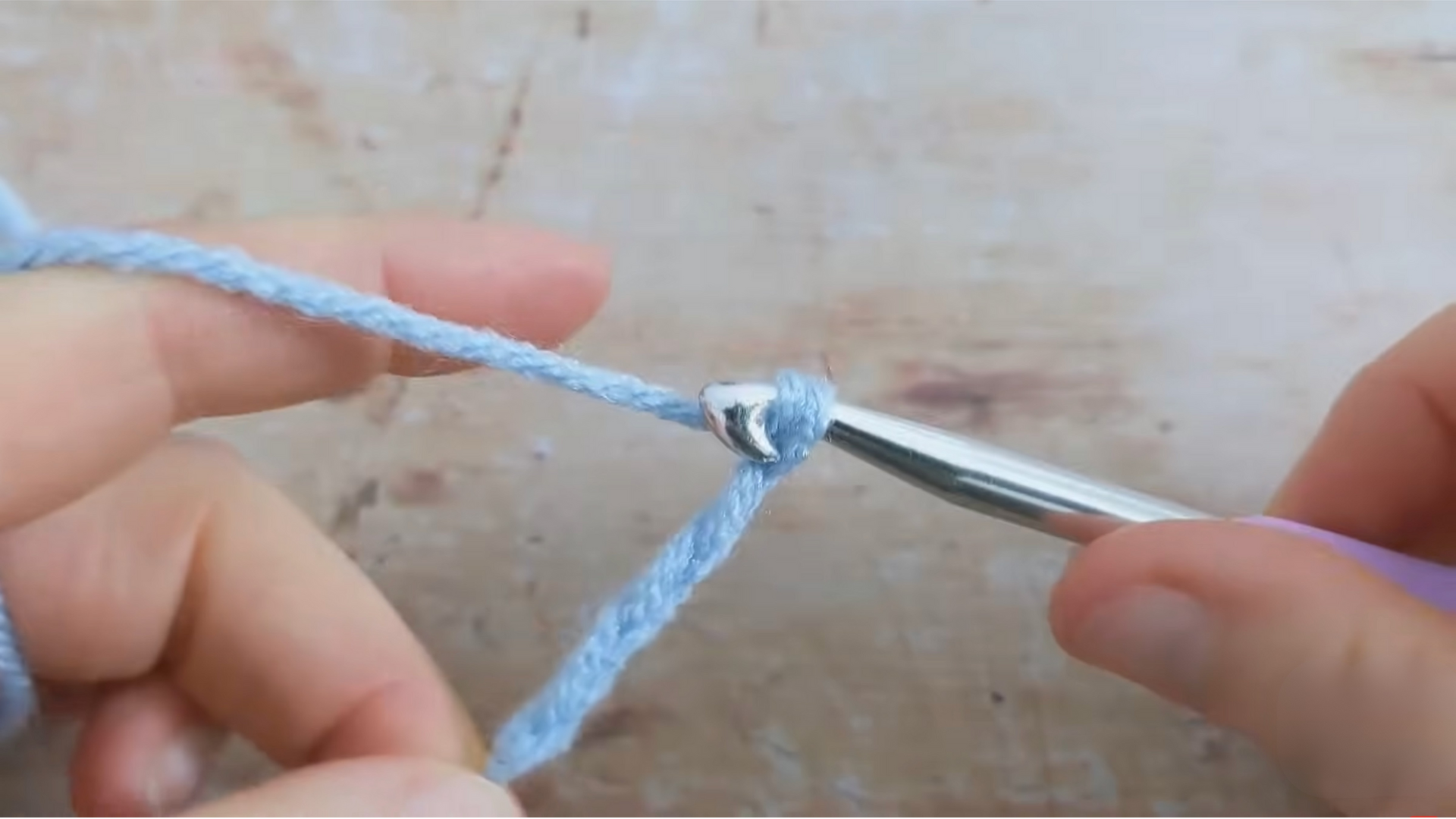
- Chain a multiple of 3 + 1, then add 1 more (pattern multiple + turning chain).
- For baby size, chain 80.
Step 2: Crochet the First Row (Single Crochet Base)

- Work 1 SC in the 2nd chain from the hook, then 1 SC in each chain to the end.
- You now have a flat base for the ripple pattern.
Step 3: Begin the Ripple Stitch Pattern
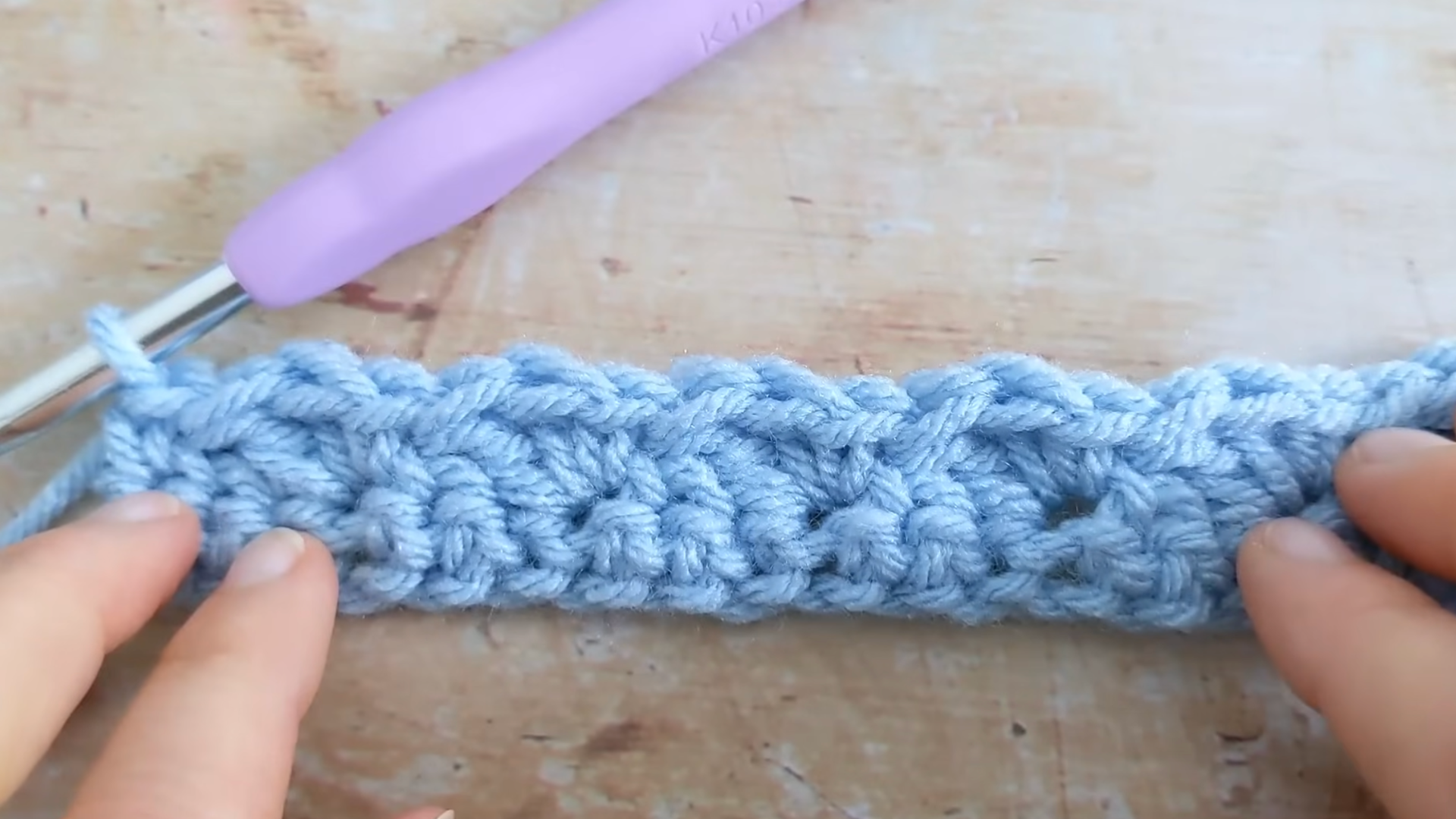
- Ch 2, turn (counts as first stitch); work 2 DC in the same stitch (base of ch-2).
- Repeat across: skip 2 sts; (SC, 2 DC) in next st. When 3 sts remain, skip 2, SC in last st.
- Quick check: if you started with 80 chains, you should have 79 stitches at the end of this row.
Step 4: Continue the Ripple Rows
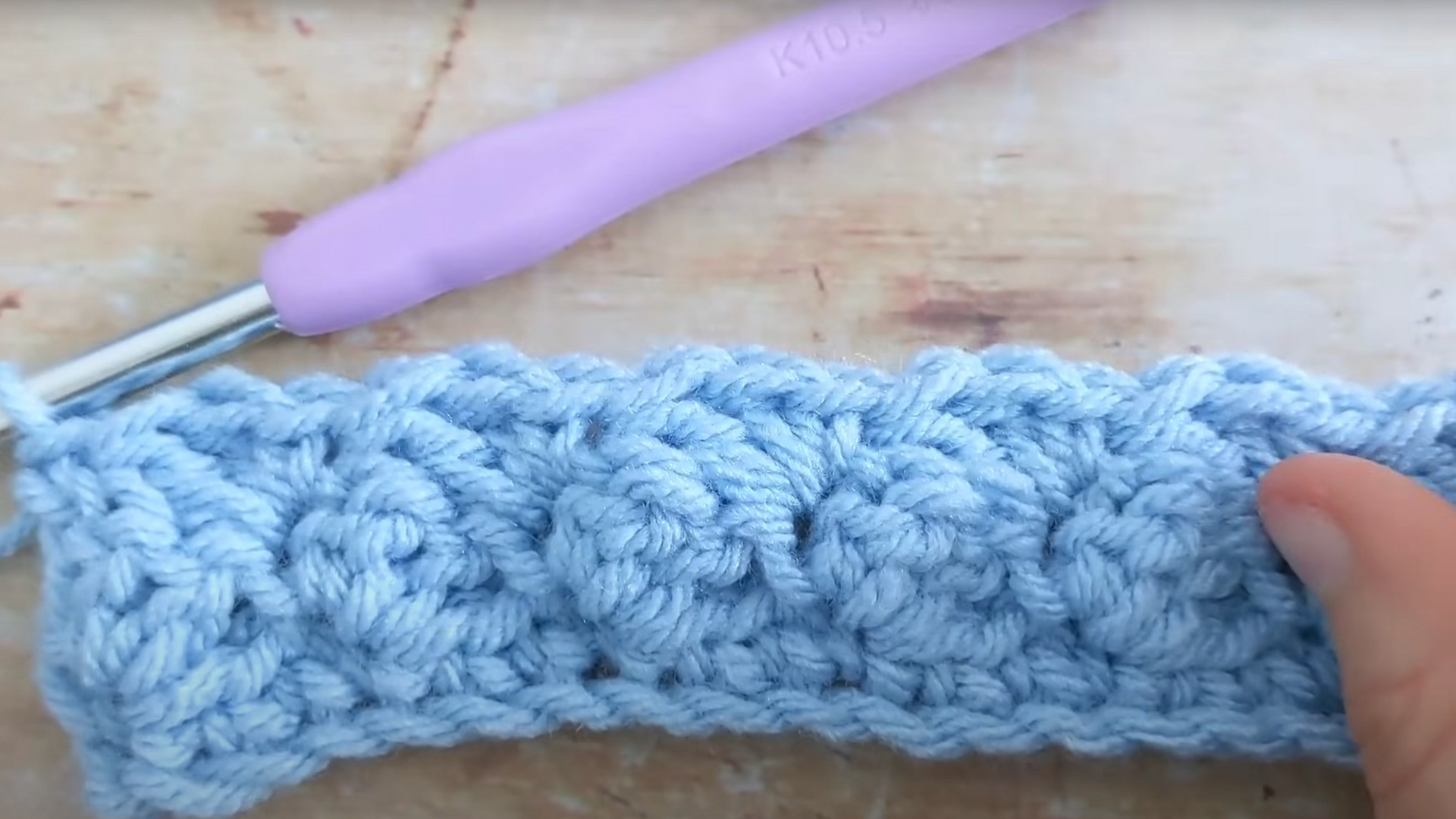
- Ch 2, turn; 2 DC in first stitch.
- Repeat across: skip the next 2 DC, then (SC, 2 DC) into the single crochet from the previous row.
- When 3 sts remain, skip 2, SC in the top of the ch-2.
- Repeat Row 3 until the piece measures about 27″ (69 cm) or your preferred length.
Step 5: Add the First Border Round
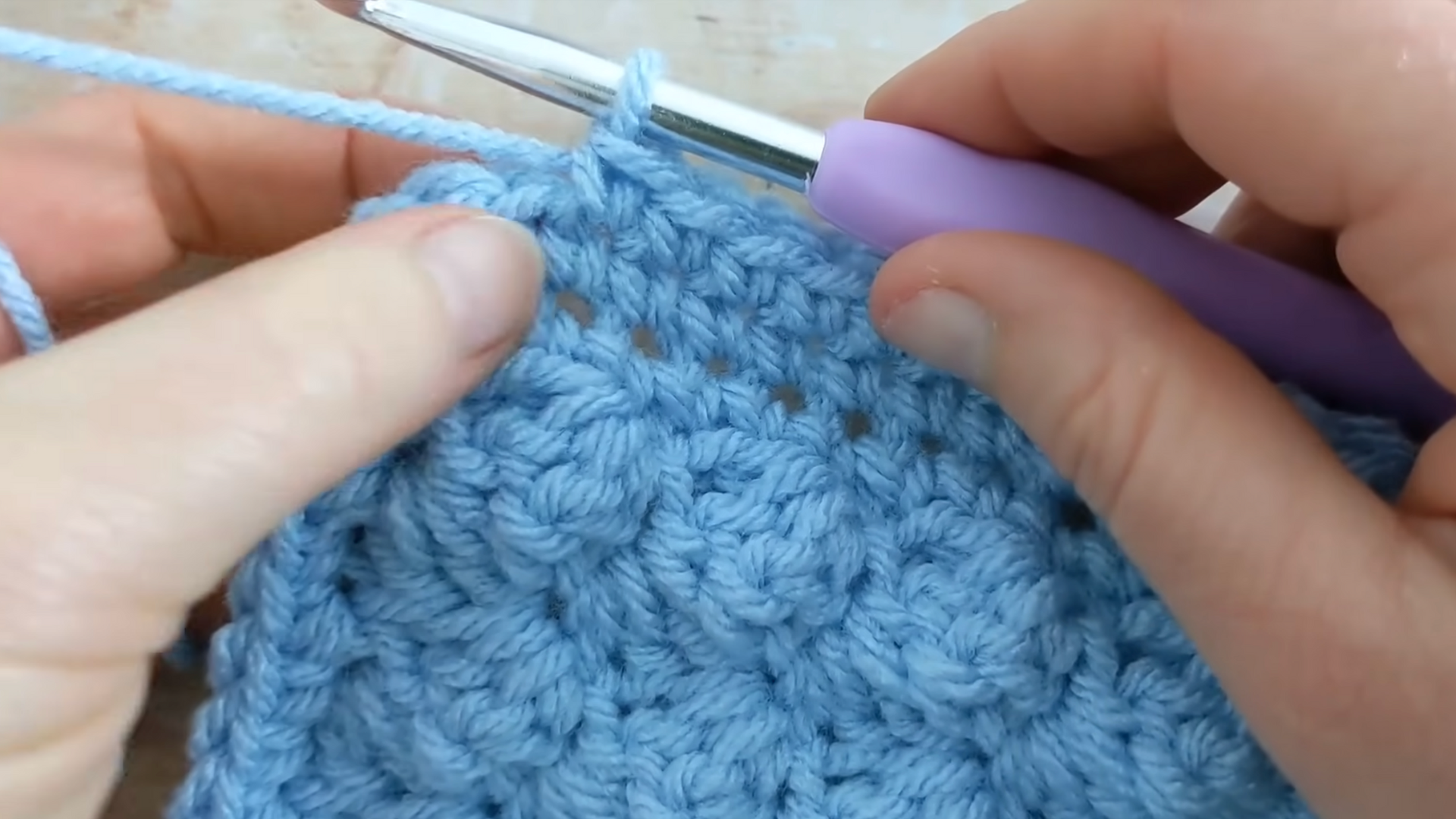
- After your last row, place 2 more SC in the last stitch so the corner has 3 SC total.
- Work SC evenly down the first side (place stitches neatly in the gaps/row ends).
- 3 SC in the corner, then SC in each stitch across the foundation edge.
- 3 SC in the next corner, SC evenly up the second side.
- 3 SC in the top corner, then SC in each stitch across the top edge.
- Join with a slip stitch to the first SC to finish Round 1.
Step 6: Build the Remaining Border Rounds
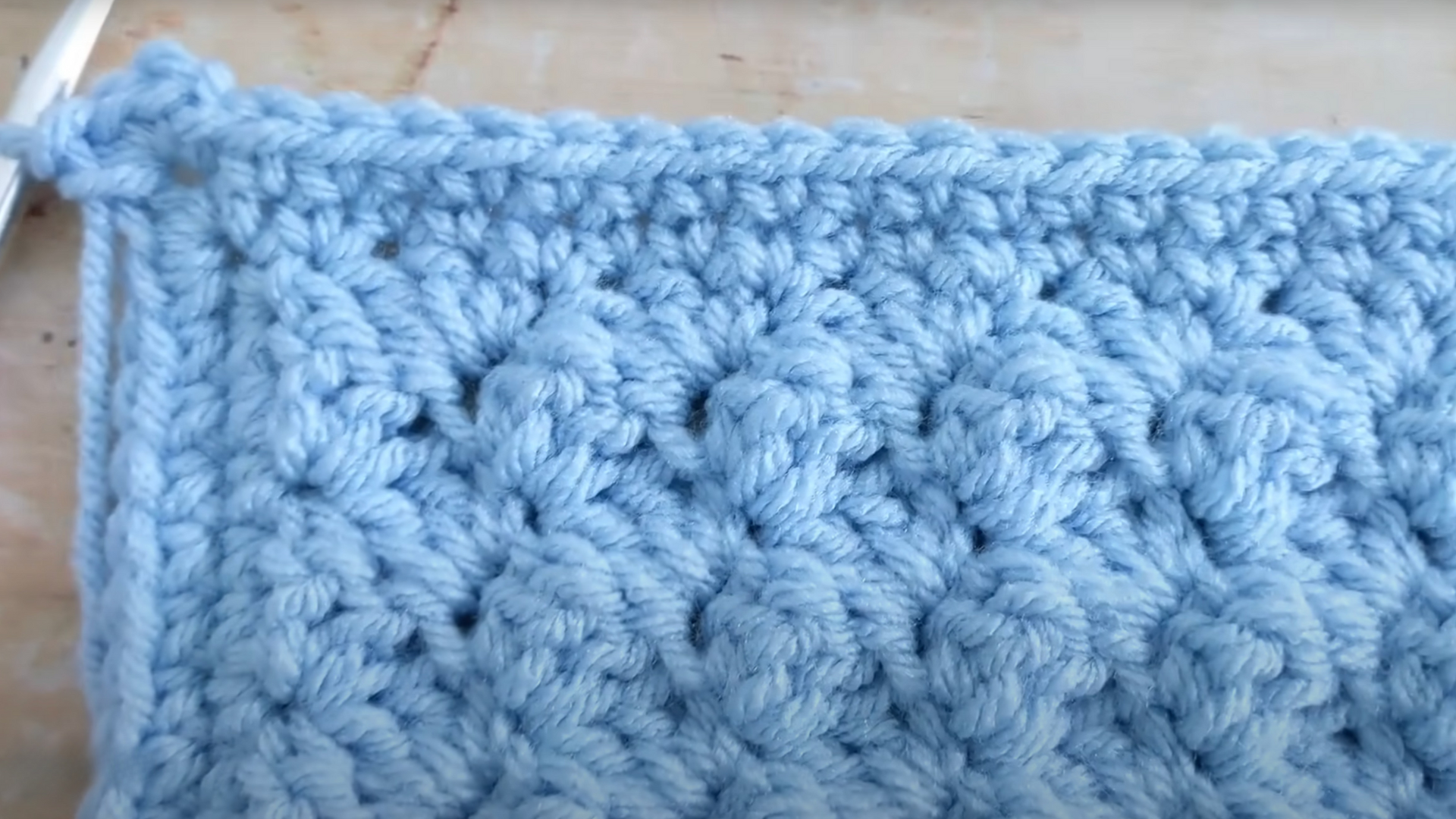
- Ch 1 to begin each round. Work SC in each stitch along the sides.
- At every corner 3-SC group from the prior round, do: SC in first, 3 SC in the middle stitch, SC in third.
- Continue around; join with a slip stitch to the first SC each round.
- Repeat this round for a total of 4 border rounds.
Step 7: Finish and Add the Final Touches
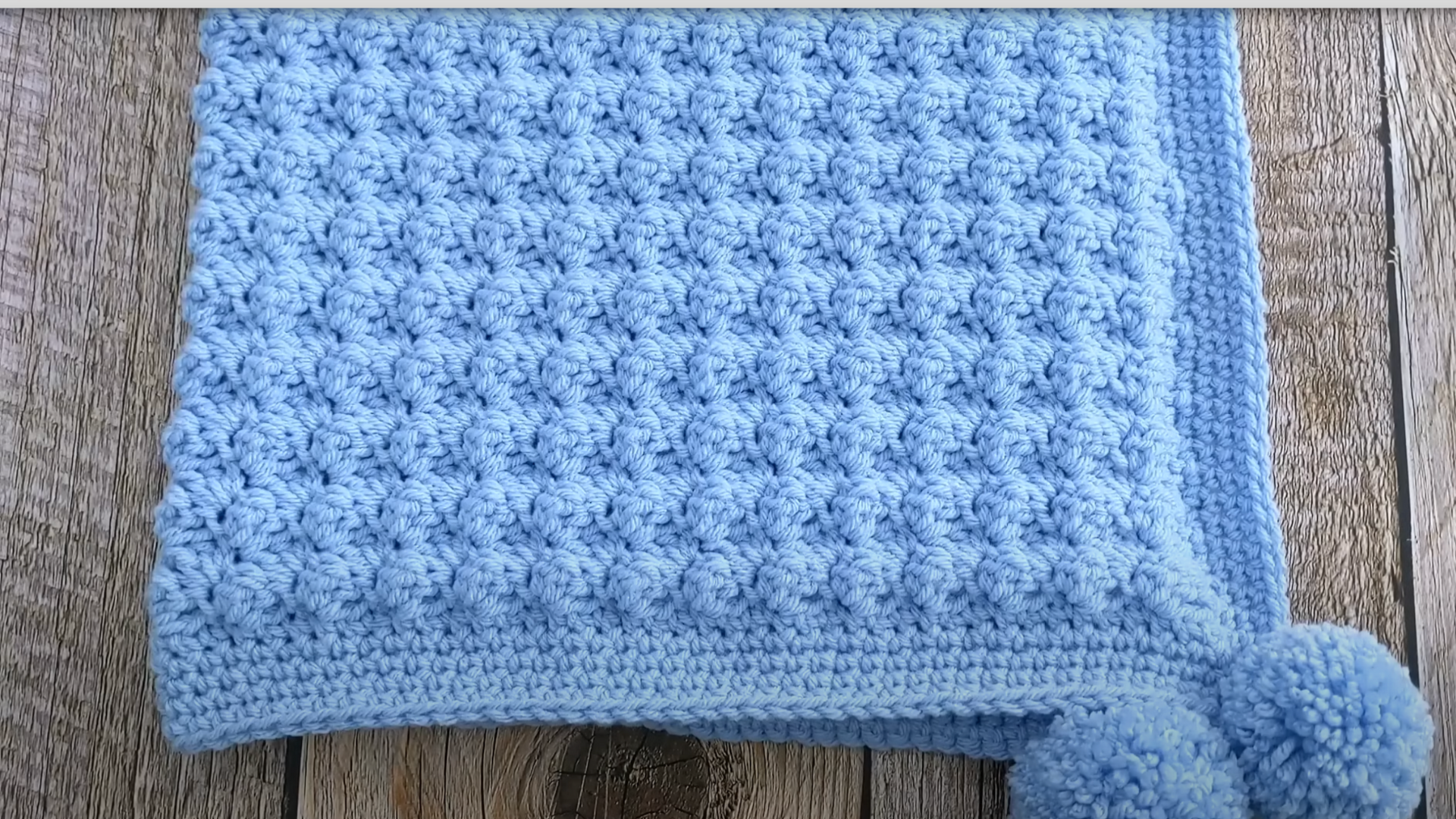
- Weave in all ends with a yarn needle; trim neatly.
- Add pom-poms to each corner if you like.
- Wash gently and air-dry to keep the blanket soft and in shape.
If you prefer visual help, follow this easy step-by-step video tutorial to see the full process in action.
Easy Crochet Patterns for Beginners
These are a few simple baby blanket patterns that are perfect for those new to crochet. Each one comes with a short description and video guide.
1. Basic Single Crochet Blanket
This tutorial guides you through creating a baby blanket in simple steps, making it ideal for beginners. You’ll learn how to start, stitch with consistency, and finish with a neat edge for a cozy result.
2. Granny Stripe Baby Blanket
I found this video super helpful for beginners learning to crochet baby blankets. It guides you through each step clearly, from starting your chain to finishing with a soft, tidy border. The pattern is simple, relaxing, and perfect if you’re making your first baby blanket.
3. Corner-to-Corner (C2C) Blanket
This video is a great pick if you’re new to crochet and want to make a baby blanket. It guides you through each stitch clearly, from starting your foundation chain to the final border, in a calm and easy-to-follow manner.
4. Half-Double Crochet Blanket
This tutorial breaks down the step-by-step process of crocheting a beautiful baby blanket. It guides you clearly from the first chain to the final trim, making it ideal for beginners wanting a cozy result.
5. Ripple or Chevron Baby Blanket
This video offers a clear beginner’s guide to crocheting a baby blanket from start to finish. It shows you how to chain, build stitches, and add the finishing border all in an easy and steady pace.
Crochet Tips for Baby Blankets
Here are a few natural intro line options you can use right after the heading. Choose the one that best fits your tone:
- Use stitch markers to keep your rows even and prevent counting mistakes. They’re especially useful for beginners learning to manage pattern repeats.
- Check your tension as you crochet. If it’s too tight, the blanket will feel stiff; too loose, and the edges will stretch unevenly.
- Work with lighter colors when starting out. They make it easier to see your stitches and spot any errors before they spread through the pattern.
- Pre-wash your yarn if it’s a natural fiber like cotton or bamboo. This helps you check for softness, shrinkage, or color bleeding before you start.
- Crochet in smaller sections if you’re new to large projects. It’s easier to manage, less tiring, and you can join the pieces later for a neat finish.
Conclusion
Now you know how the right yarn can make a huge difference in both comfort and quality. The best yarn for baby blanket projects should feel soft, safe, and easy to care for.
Following the crochet steps from the ripple stitch to the border helps you create a blanket that looks neat and lasts for years.
I always recommend choosing smooth, hypoallergenic yarns that hold shape after every wash. They make each stitch more enjoyable and the blanket truly special.
If you’re ready to start, grab your hook, pick your favorite baby blanket yarn, and follow the steps in this guide to make a keepsake worth cherishing.

